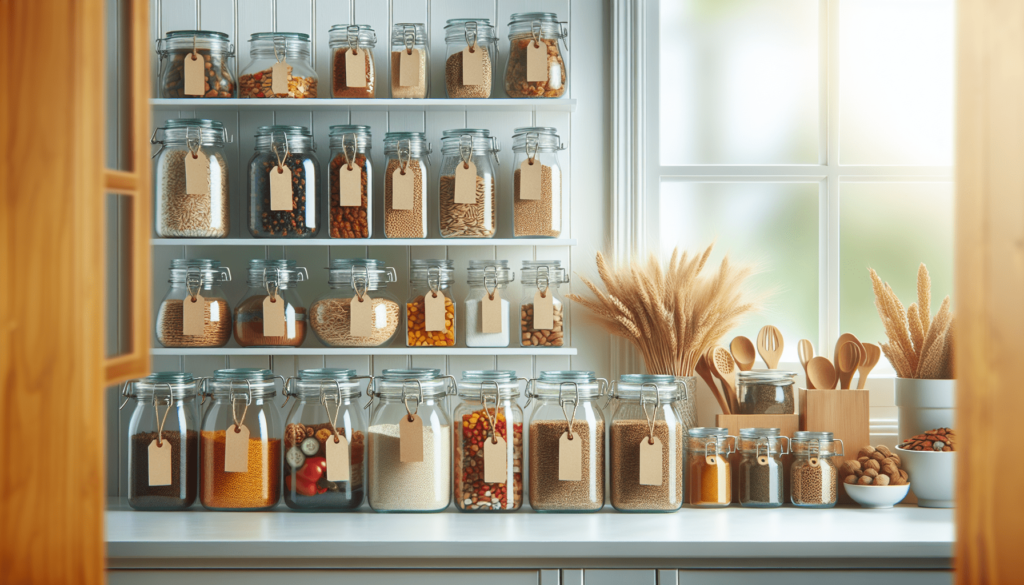Have you ever wondered how to create a low-allergen pantry in your kitchen? Whether you or a family member has food allergies, making your pantry a safe space is paramount. Taking the time to organize and plan can ease stress and make daily meal prep a breeze. Let’s walk through some practical tips and steps to help you get started on this important task.

Understanding Food Allergens
Food allergens are substances that can cause allergic reactions. For some people, even small amounts can trigger serious conditions. Knowing what you and your family members are allergic to is crucial before you start organizing your pantry. Common food allergens include milk, eggs, fish, shellfish, tree nuts, peanuts, wheat, and soybeans.
Identifying Common Allergens in Your Pantry
Review all products in your current pantry and identify those containing common allergens. Here’s a table listing common allergens and examples of foods that may contain them.
| Allergen | Common Foods |
|---|---|
| Milk | Cheese, yogurt, butter, cream |
| Eggs | Mayonnaise, baked goods, custards |
| Fish | Salmon, tuna, cod, fish sauces |
| Shellfish | Shrimp, crab, lobster, scallop |
| Tree Nuts | Walnuts, almonds, cashews, nut-based oils |
| Peanuts | Peanut butter, sauces, baked treats |
| Wheat | Bread, pasta, cereals, flour |
| Soybeans | Tofu, soy milk, soy sauce, edamame |
Planning Your Low-Allergen Pantry
Once you have identified the allergens, the next step is to plan how to organize and store items to minimize cross-contamination. This process involves segregating allergen-free products and educating everyone in the household.
Segregation of Allergen-Free and Containing Foods
To prevent cross-contamination, create distinct sections in your pantry. Label each area for clarity. Consider using separate shelves or bins.
Separate Storage Containers
Invest in airtight storage containers for allergen-free items. Clear containers with labels are particularly useful. Ensure these containers are easy to clean and durable.
Labeling and Documentation
Label each item with allergens or an “allergen-free” tag for quick identification. Keep a simple, updated inventory list to track what’s in the pantry and avoid the need to check individual items each time.
Regular Cleaning
Regularly clean your pantry to avoid the buildup of potential allergens. Use safe cleaning products and ensure thorough washing and drying.
Stocking Safe Staples
Now that you have a basic understanding and a plan, it’s time to stock your pantry with safe staples. Here are some essential low-allergen items to include:
Grains
Grains like rice, quinoa, and oats (gluten-free if needed) are naturally low in allergens. These can be versatile bases for many meals.
Proteins
Include a variety of safe proteins like beans, lentils, and canned meat or fish that suit the dietary needs of your household.
Snacks
Find allergen-free snacks such as rice cakes, fruit, and allergen-free granola bars. Be mindful of cross-contamination by checking labels.
Baking Supplies
Ensure allergen-free flour, baking powders, and sugars. Specialty stores often have diverse options like almond flour or coconut sugar.
Spices and Condiments
Stock your pantry with safe spices and condiments. Many pre-made mixes may contain hidden allergens, so consider creating your own blends.
Safe Shopping Practices
Shopping for allergen-free products can be daunting but following some tips can make it easier.
Reading Labels
Always read labels carefully. Manufacturers regularly update ingredients, and what was safe last month might not be today. Look for allergens listed in bold.
Choosing Reliable Brands
Stick to brands that specialize in allergen-free products. Many companies are dedicated to producing safe alternatives and have clear labeling practices.
Buying in Bulk
Buying in bulk can be beneficial but ensure the bulk bins at stores have strict no-contamination policies. If unsure, buy pre-packaged items.
Where to Shop
Online stores, health food stores, and even regular supermarkets often have sections dedicated to allergen-free products. Familiarize yourself with these stores.

Meal Planning and Preparation
Proper meal planning and preparation are just as important as organizing your pantry. Here are some tips to keep your kitchen safe.
Design a Weekly Meal Plan
Creating a weekly meal plan reduces the risk of encountering unexpected allergens. Plan meals around the safe staples in your pantry.
Safe Cooking Practices
Adopt safe cooking practices such as using separate cookware and utensils for allergen-free food. Clean cooking surfaces thoroughly between uses.
Educate All Household Members
Ensure everyone understands the importance of keeping allergen-free areas and tools exclusive. Education reduces the chance of accidental contamination.
Storing Leftovers
Store leftovers in clearly labeled airtight containers. Keep them in a designated section of the fridge to avoid mix-ups.
Minimizing Cross-Contamination
Cross-contamination occurs when an allergen-free food comes into contact with allergens. Here’s how to minimize this risk.
Utensil Management
Use color-coded utensils and cutting boards to differentiate between allergen-containing and allergen-free food prep.
Dishwasher Practices
If possible, run a separate dishwasher cycle for allergen-free items. If this isn’t feasible, ensure thorough washing of all utensils and dishes.
Cleaning Surfaces
Wipe down surfaces with approved cleaners and always clean from top to bottom to prevent particles from falling onto cleaned areas.
Emergency Preparedness
Despite all precautions, accidents can still happen. Prepare yourself by having an emergency plan.
Allergy-Friendly First Aid Kit
Stock a first aid kit with essentials like antihistamines and epinephrine injectors based on the allergies involved.
Allergy Action Plan
Create a clear action plan outlining steps to take during an allergic reaction. Ensure all household members know this plan and practice it regularly.
Medical Identification
Consider medical alert bracelets for allergic individuals, especially if they are children. This helps first responders provide appropriate care quickly.
Educating Family and Friends
It’s important to also educate family and friends about the seriousness of food allergies. Here are ways to inform others.
Hosting and Visiting
When hosting or visiting, communicate clearly about dietary needs and how to avoid cross-contamination. Offer to bring safe food to events when visiting others.
Awareness and Sensitivity
Encourage awareness and sensitivity within your social circles. The more people understand, the safer the environment for those with food allergies.
Sharing Resources
Share resources, recipes, and tips with others who have similar dietary restrictions. Support networks can provide valuable advice and encouragement.
Final Thoughts
Creating a low-allergen pantry in your kitchen involves careful planning, organization, and continuous education. By taking these steps, you can create a safer and more inclusive environment. Remember, a little effort goes a long way in ensuring the health and well-being of everyone in your household. Your pantry can be a safe haven with conscious choices and consistent practices.
